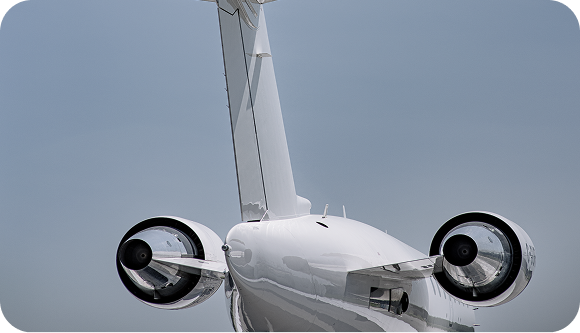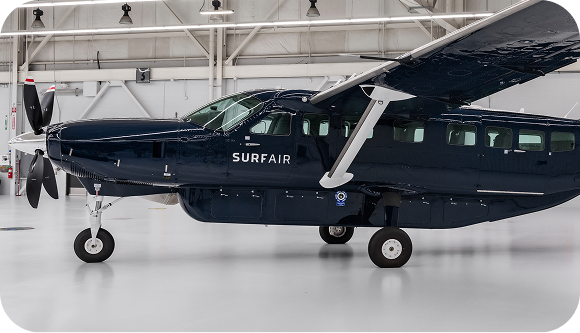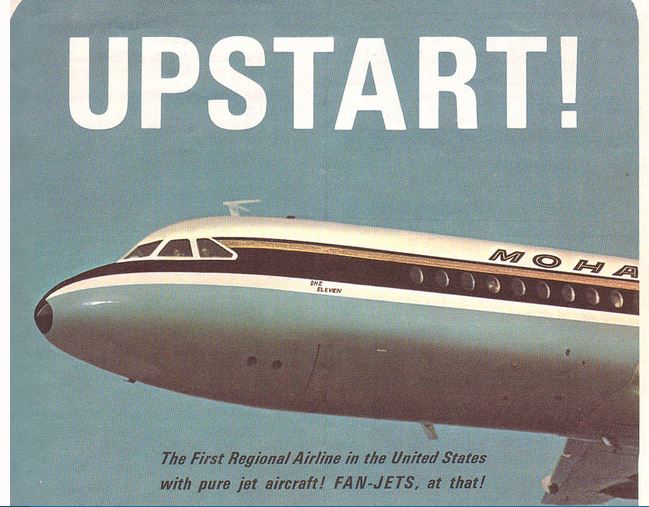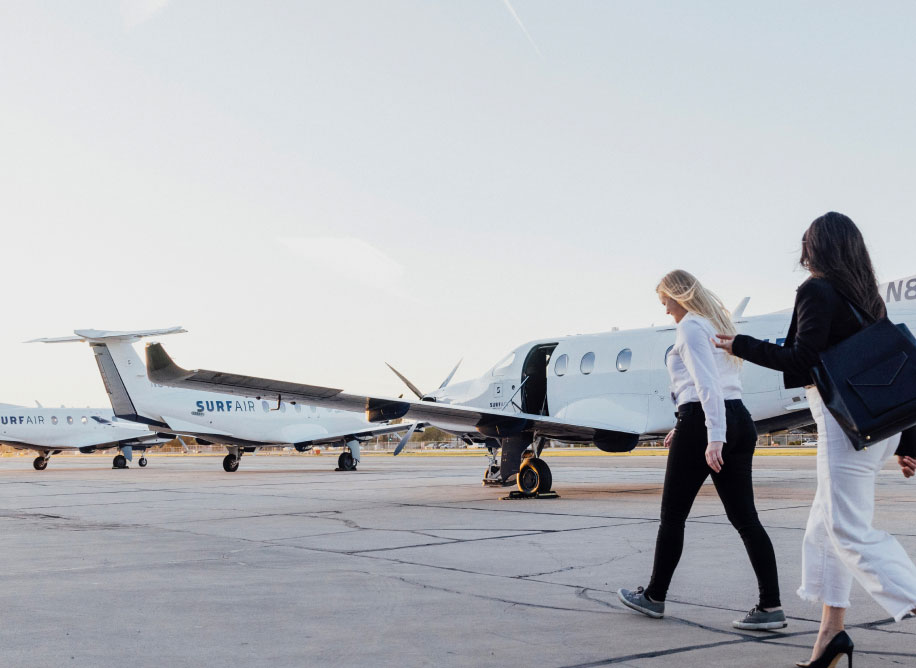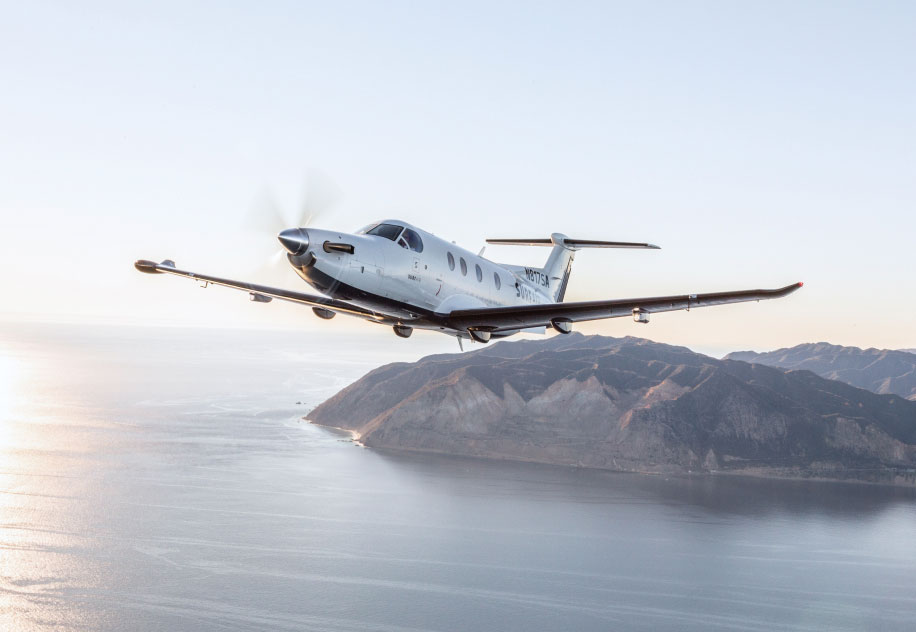Would the names Mohawk Air or Mesa Air emblazoned on the tail of a jet aircraft make you do a double take? They may stand out in an era of megacarriers and corporate airline dominance, but in the ’50s and ’60s, these regional carriers were a crucial part of the aviation system.
The golden age of regional air carriers coincides with the expansion of flight in the post-war era, with a boom in business travel and leisure time boosting the need for aviation entrepreneurship (Mohawk even makes a few cameos in Mad Men, including Don Draper’s sloganeering for the airline). The relatively limited range of planes at the time opened the door for colorful, regional businesses to open, a sharp contrast to the conglomerates of today.
The names alone underscored the optimism and energy of the era. Bonanza Air, a western carrier “flying the route of the gold strikes,” ran then-new DC-9 aircraft on routes to Vegas. Air Wisconsin, also known as Air Willy or Rag Tag, flew turboprop planes across the Upper Midwest. Mohawk Air, operating out of Ithaca, New York, was a social and technological pathbreaker, hiring the first Black flight attendant in 1957, and in the ’60s, pioneering the use of computer-based reservation systems and flight simulators. Texas International, famous for low-cost “peanut fares,” came up with the first frequent flier program. All these airlines connected smaller communities and airstrips to the larger aviation system, creating more variety and freedom for fliers.
This growth in these regional, locally owned and operated carriers began fraying in the late ’60s and ’70s. Improvements in flight technology and the increased range of progressively larger jets led to consolidation within the industry. Oil wars and a recession pummeled airlines, especially smaller carriers. The 1978 Airline Deregulation Act (which removed federal control over such areas as fares, routes, and market entry of new airlines) sped up the demise, transformation, or sale of many existing carriers, while sparking price wars that made it hard to compete while staying small and independent.
Regional air carriers didn’t go away. They’re now the local workhorses of the big carriers, feeders for the hub-and-spoke system; approximately 65 largely unknown regional carriers, flying with the colors of the major airlines, still carry 40% of American flyers. In many cases, larger mainline airlines own and operate them as subsidiaries, often paying their employees lower wages.
While this arrangement does maintain service to some small airports and less-populated locations, it offers far fewer choices and direct flights than in decades past. And these flights have lost the luster of a previous age when regional air signaled the promise and prosperity of a nation of travelers.
We think the time is right for a renaissance in regional air travel, a return to that golden age of small and scrappy fliers connecting more dots on the map and serving passengers in style. And the conditions are ripe, with similar booms in travel closer to home and aviation entrepreneurship.
Our expanding network offers increasing on-demand and point-to-point options, making it more feasible to reach smaller destinations, especially without multiple stops. And our investment in sustainable aviation means we can reduce the environmental impact—and the cost—of flying, opening up new possibilities for how we live, work, and travel.

